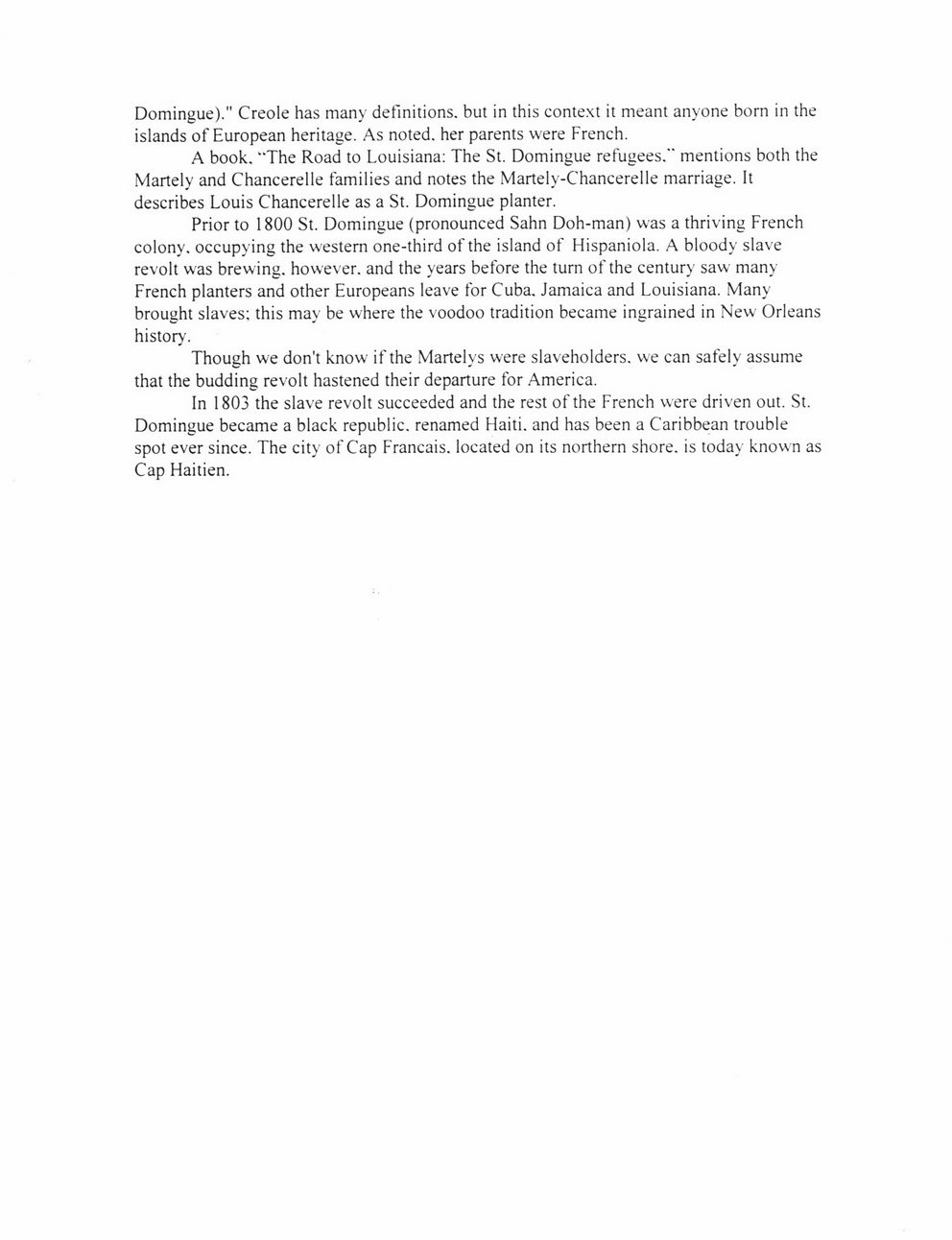This text was obtained via automated optical character recognition.
It has not been edited and may therefore contain several errors.
Domingue)." Creole has many definitions, but in this context it meant anyone born in the islands of European heritage. As noted, her parents were French. A book. "The Road to Louisiana: The St. Domingue refugees." mentions both the Martely and Chancerelle families and notes the Martely-Chancerelle marriage. It describes Louis Chancerelle as a St. Domingue planter. Prior to 1800 St. Domingue (pronounced Sahn Doh-man) was a thriving French colony, occupying the western one-third of the island of Hispaniola. A bloody slave revolt was brewing, however, and the years before the turn of the century saw many French planters and other Europeans leave for Cuba. Jamaica and Louisiana. Many brought slaves; this may be where the voodoo tradition became ingrained in New Orleans history. Though we don't know if the Martelys were slaveholders, we can safely assume that the budding revolt hastened their departure for America. In 1803 the slave revolt succeeded and the rest of the French were driven out. St. Domingue became a black republic, renamed Haiti, and has been a Caribbean trouble spot ever since. The city of Cap Francais. located on its northern shore, is today known as Cap Haitien.

Monet 003